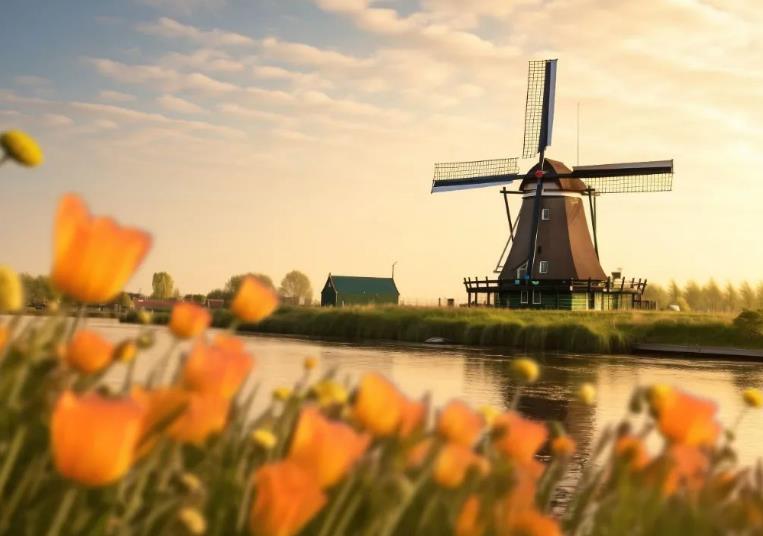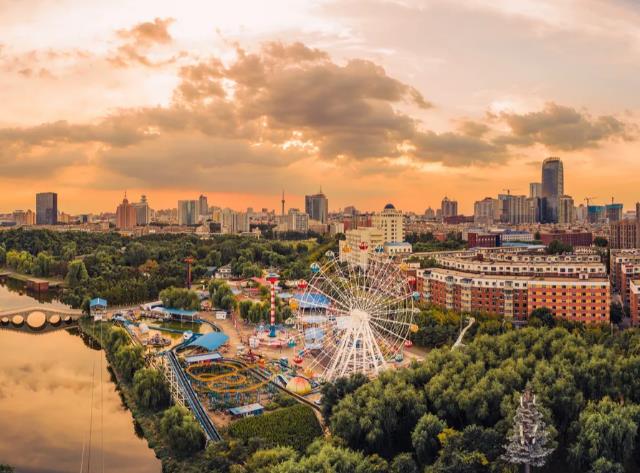https://nz.trip.com/moments/poi-viewing-platform-of-lion-mountain-in-lijiang-ancient-town-69345450
3.6
4.3/5
3 reviews
Night view
Viewing Platform of Lion Mountain in Lijiang Ancient Town Address:
In Lion Rock Scenic Spot, Xinhua Street, Dayan Town, Licheng City
Viewing Platform of Lion Mountain in Lijiang Ancient Town Recommended sightseeing time:
1-2 hours
Chill hike to coffee
Although in general, hikes are supposed to be strenuous this time we decided to have a chill hike and reach a coffee destination. Well, who would say No for such a killer combo of coffee ☕ and hike. As our journey to this embarked on going through narrow streets 🛣️ of Lijiang ancient town, exploring some local traditions, local snacks and ofcourse lovely people 💕. After a hike of nearly 30 minutes, we reached AIS house which looked like would turn into a wine 🍷house in the evening. But we stayed only for coffee there, and then went to hike little more to see the lion peak from the specified pavilion. Also we found some nice hotels to stay there. Next time we will def do that !! #lijiangtravel
#summervacation#hikingtrails
Aaru 裴儒
10
A Notch Down
As we had indulged in too much caffeine content both in my series of posts here and on our trip in Yunnan; we would like to take a notch down 🔻 and do some decaf overall. Yes, finally I tried the decaf-ed coffee ☕ which still I'm not sure how it feels.
Decaf process involves taking away that caffeine content from coffee beans using a chemical reaction🧑🔬, which ultimately results in less endorphin acceleration. Also it is a way to get yourselves cleaned, and so the next time you will get even more high while drinking coffee.
This place amidst the Lijiang town, you get the view of Lion 🦁 mountain with some cool setup made for photoshoot. Worth to sweat it out !! 🥸 #coffeeshop #urbanexplorer
#summerdays#urbanexplorer#tripfoodie
Aaru 裴儒
5
Lijiang Five Days Four Nights Travel Guide
Lijiang Five Days Four Nights In-Depth Travel Guide | The Perfect Guide to Encountering Soft Moments
Day 1: First Encounter with Lijiang | Slow Life in the Ancient Town
Morning: Arrive at Sanyi Airport, take the airport shuttle bus (20 RMB/person) directly to Dayan Ancient Town
Recommended Accommodation: Choose a Naxi courtyard guesthouse near Sifang Street (off-season 200-400 RMB/night)
Afternoon: Stroll around 【Dayan Ancient Town】 Check-in spots: Big Waterwheel → Sifang Street → Xianwen Lane Oil-paper Umbrella Street
Must-experience at night: Lion Hill Viewing Platform for a panoramic view of the ancient town, listen to folk songs at Bar Street (recommended "Hope You Are Here" quiet bar)
Day 2: Jade Dragon Snow Mountain | Glacier Secret Journey
6:30 Departure (recommended to join a pure-play small group tour 500 RMB/person including cold-proof clothing and oxygen)
Morning: Take the cable car to the top of the Glacier Park at 4680 meters (beware of altitude sickness)
Noon: Take photos at 【Blue Moon Valley】 at the foot of the snow mountain (bring ethnic-style shawls for better photos)
Afternoon: Watch the live performance "Impression Lijiang" (VIP ticket 280 RMB)
Dinner: Taste cured pork rib hotpot (recommended "Grandma’s Home" old brand)
Day 3: Tea Horse Road | Horse Caravan Culture Experience
Morning: Horseback riding at Lashi Lake along the Tea Horse Road (choose a reputable stable, about 180 RMB/person including boating)
Hidden activity: Visit a Naxi family farm and learn Dongba papermaking
Afternoon: Relax at Shuhe Ancient Town (quieter than Dayan), check in at Qinglong Bridge + Jiuding Longtan
Special experience: Free bonfire dance at Sifang Listening Square at 19:30
Day 4: Tiger Leaping Gorge + Baisha Ancient Town | A Feast of Nature and Culture
Charter a car to 【Upper Tiger Leaping Gorge】 (1.5-hour drive, ticket 45 RMB), feel the roar of the Jinsha River
Afternoon: Explore 【Baisha Ancient Town】 three main highlights: Baisha Murals → Tie-dye Workshop → Snow Mountain Café
Food surprise: Rose steamed buns from the Mantou Poet’s home (sold out by 3 PM)
Day 5: Cultural Remnants | Return with Memories
Early morning: Take photos of the Jade Dragon Snow Mountain reflection at Black Dragon Pool Park (receipt for ancient town maintenance fee required)
Morning: In-depth tour of the Mu Residence (ticket 40 RMB, free guided tour available)
Recommended souvenirs: Jiahua freshly baked flower cakes, Dongba paper lanterns, handmade silverware (look for "Baishuifang")
Afternoon flight return, recommend leaving 2 hours for the airport
Before You Go:
✔️ Lijiang altitude 2400 meters, generally no altitude sickness
✔️ Wear non-slip shoes on the ancient town’s stone pavements
✔️ Sunscreen essentials: sunglasses + hat + SPF50+ sunscreen
✔️ Best seasons: March-May for spring blossoms, September-November for autumn colors
Pitfall Tips:
🚫 Cheap tours from roadside touts often have hidden costs
🚫 Be cautious buying silverware/tea if you’re not knowledgeable (authenticity guaranteed at "Lijiang Silverware Museum")
🚫 Confirm if ethnic photo shoots include makeup and styling (average price 199-399 RMB)
Budget Reference (Comfortable trip for 2):
Transportation: Airfare varies by location, local transport about 600 RMB
Accommodation: Four nights boutique inn 1200 RMB
Tickets and experiences: about 1500 RMB
Meals: 1000 RMB (taste all Naxi cuisine)
Total: Starting from 4300 RMB
When the morning sunlight shines on the bluestone slabs of Sifang Street, you will understand why people don’t want to leave Lijiang once they arrive. It is recommended to save this guide; at a corner of the ancient town, you might just encounter your own "one meter of sunshine" story.
ADRIAN SUTTON
1
The standalone garden courtyard in Lijiang is truly beautiful
√ Naxi intangible cultural heritage √ Garden courtyard √ Walkable to Lijiang Old Town
This 300-year-old Naxi ancestral home features a lush green courtyard🍃 filled with floral fragrance🌸. The rooms perfectly blend traditional ethnic architectural style with modern amenities. Spacious and bright, exquisitely decorated with soft, comfortable bedding, every detail reflects quality. There's also a common area.
⛳ Excellent location
Right in the heart of the old town, accessible by taxi directly to Lion Hill summit, just 🚶 under 5 minutes' walk from the hotel. The innkeeper proactively contacts guests to advise the best arrival method. From the airport or high-speed rail station🚄, get off at Lion Hill Viewing Platform where the homestay staff will pick you up~ Excellent service👍
🍃 Breakfast features freshly cooked rice noodles and boiled eggs🍳. The owner is very hospitable, contacting us a day in advance to arrange pickup service and providing thoughtful assistance throughout our stay👍
⛳ Location: Lijiang Old Town District
💒 Name: Yueshang Rizhao Jinshan Designer Panoramic Homestay
KNOX BOOTH
Back to Lijiang and staying at the Indigo Hotel in the Ancient City
Lijiang is located on the southern edge of the Qinghai-Tibet Plateau, in the northwest of Yunnan Province. It is connected to the Liangshan Yi Autonomous Prefecture and Panzhihua City in the east, and Dali Bai Autonomous Prefecture in the south. During the Paleolithic Age, late Homo sapiens were already active in Lijiang. During the Warring States period, it belonged to the Shu Prefecture of the Qin Kingdom. After Zhuang Qiao of Chu opened up Yunnan, it belonged to the Dian Kingdom. Lijiang has three world heritages: culture, nature, and memory, as well as the Naxi Dongba culture and the matriarchal culture of Lugu Lake. The ancient city of Lijiang was built in the late Song and early Yuan dynasties. When the Mu family ancestors of Lijiang moved the ruling center from Baisha Ancient Town to Lion Mountain, they began to build the city. The establishment of the Tusi system in the Ming Dynasty marked the first glorious period in the history of the ancient city of Lijiang. The streets of Dayan Ancient City are built along the mountains and rivers, with attractions such as the Mu Mansion, Wangu Tower, Sifang Street, and Wenchang Palace.
Driving back to Lijiang from Shangri-La and checking into the Indigo Hotel in the Ancient City. The hotel is located at the South Gate of the ancient town, a great location. The hotel is fully integrated into the surrounding environment of the ancient city, combining Naxi, Tibetan, and Tea Horse Road cultural elements. It is a great choice for off-peak travel. The handsome guy at the hotel front desk also upgraded me to a deluxe suite for free. It's so beautiful. When I came to Lijiang, I stayed at the InterContinental Hotel next door, so I am very familiar with the surrounding environment. The breakfast buffet is also at the InterContinental Hotel, which is very good. I also went to the ancient city for a walk, a wonderful time.
Addison Nelson

Recommended themes

2025 Recommended Comprehensive guides in Viewing Platform of Lion Mountain in Lijiang Ancient Town (Updated October)
4 posts

2025 Recommended Itinerary in Viewing Platform of Lion Mountain in Lijiang Ancient Town (Updated October)
3 posts
6-Day Tour of Lijiang-Yulong Snow Mountain, Yunnan: A Feast for the Eyes
Hey everyone! Here's a super detailed guide for a 6-day tour of Lijiang-Yulong Snow Mountain in Yunnan. Save it now so you don't get lost~
--------
🚩Itinerary:
D1: Green Lake Park -> Dianchi Lake -> Grand View Pavilion -> West Hill Scenic Area -> Yunnan Nationalities Village -> Jinma Biji Archway
Enjoy the beautiful scenery of Kunming and experience the diverse culture of Yunnan.
D2: Stone Forest Scenic Area
Explore the unique karst landforms and marvel at the wonders of nature.
D3: Ideal City -> Nanzhao Style Island -> Erhai Lake
Take a trip around Erhai Lake and experience the blend of Bai culture with the picturesque scenery of the lake and mountains.
D4: Yulong Snow Mountain -> Yulong Snow Mountain Cableway -> Lijiang Eternal Love Show -> Lijiang Old Town -> Lion Hill Viewing Platform in Lijiang Old Town
Conquer Yulong Snow Mountain, experience the thrilling cable car ride, and then visit the old town to appreciate the Naxi culture.
D5: Shuhe Ancient Town -> Impression Lijiang Show -> Blue Moon Valley
Stroll through the ancient town, watch the Impression Lijiang show, and discover the tranquil beauty of Blue Moon Valley.
D6: Kunming -> Tourist Distribution Center -> Complimentary 24-hour transfer service to the airport -> End of the pleasant trip
Prepare for your return journey, filled with wonderful memories.
--------
Tips:
- Photo spots: Blue Moon Valley at the foot of Yulong Snow Mountain, where the turquoise water reflects the sky, is perfect for taking photos📸.
- Must-try food: Lijiang Baba, a soft, sweet, and glutinous Naxi specialty🍪.
- February climate: Although it is winter, the daytime is sunny and pleasant, suitable for outdoor activities🌞; it is cold at night, so bring warm clothes🧣.
--------
Exploring Yulong Snow Mountain is that simple and fun. Don't forget to share your travel stories with me!🏔️✨
AGN. Raj 3818
5-Day Yunnan Tour: Kunming, Dali, and Lijiang - A Detailed Guide to Exploring Yunnan
Hey friends! Here's a beginner's guide to traveling in Yunnan! A 5-day in-depth tour of Kunming, Dali, and Lijiang. Explore Yunnan with this guide! Don't miss it~
.
🚩Itinerary:
Day 1: 🌍Arrive in Kunming, enjoy free time, and experience the charm of the Spring City!
Day 2: Explore the Stone Forest Scenic Area and admire the unique karst landforms.
Day 3: Boat on Dali West Lake -> Stroll through Ideal State -> Tour Erhai Lake -> Visit Dali Ancient City -> Night tour of Foreigner Street and experience the colorful Bai culture.
Day 4: Visit Heqing Xinhua Silverware Town -> Conquer Jade Dragon Snow Mountain -> Take the Glacier Park Cableway -> Watch the "Impression Lijiang" performance -> Stroll through Lijiang Ancient City -> Climb to the top of the Lion Hill Observation Deck in Lijiang Ancient City and enjoy a panoramic view of the ancient city.
Day 5: Travel through Shuhe Ancient Town -> Experience the history of the Bridge of Release -> Explore the mystery of the Nine-Dragon Pool and end your wonderful trip to Yunnan.
.
Travel tips:
🛫You can take the subway or bus from the airport to Kunming city center, which is convenient and fast.
📸Don't miss Kunming's Xishan and Dianchi Lake, Dali's Erhai Lake, and Lijiang's ancient city, all of which are great places for photos!
🎁Compare prices when buying local specialties to avoid being overcharged.
🎉Experience Bai dance and Naxi ancient music to experience Yunnan's unique folk culture.
.
🌟Come to Yunnan and experience the romance from Kunming to Dali, and then the dreamlike Lijiang. The beautiful scenery along the way will make your trip worthwhile!🌟
JEFFERSON MCGEE
1
In Lijiang, there's a night market that all the locals visit!!
A local friend from Lijiang recommended this night market to me, and it's really great to explore~ It's not far from the ancient town, you can walk there. Here, you can eat while listening to songs and watching performances, it's so interesting that you won't want to leave~
-
As I walked through, I found all kinds of snacks and delicacies, completely satisfying🈶️ Spicy beef, grilled rice cakes, seafood in sauce, spicy chicken, lemongrass grilled fish... all taste very good. The best part is the atmosphere here is particularly great, with people singing and young men and women dancing traditional dances together, it's so relaxing!
📍Lion Mountain Night Market
_TI***jb
Lijiang Ancient Town Travel Photography
Lijiang Ancient Town Travel Photography
Lijiang Dayan Ancient Town, a historical village of the Naxi ethnic group in Yunnan. Small bridges and flowing water, ancient charm. The travel photography experience in the ancient town is probably the most cost-effective in Yunnan. Prices start from 99 yuan.
Walking through the ancient town, you can experience the costumes of various ethnic minorities such as the Naxi and Bai, as well as various martial arts drama costumes.
Recommended shooting spots
Lion Hill Viewing Platform and Wenchang Palace Viewing Platform, Lion Hill ticket is 35 yuan, Wenchang Palace is free. You can take panoramic photos from above.
Big Waterwheel, a landmark scenery of the ancient town.
Dayan Flower Alley, the beautiful scene where every house has water and every household has flowers.
Sifang Street, the center of the ancient town, with many small alleys around for photography.
Time: It is recommended to shoot in the early morning or evening when the light is soft.
diplomatical_leona
1
Post
More recommendations
Recommended Attractions at Popular Destinations
Popular Attractions in Kuala Lumpur | Popular Attractions in Iguazu National Park(Argentina) | Popular Attractions in Walt Disney World Resort | Popular Attractions in Dubai | Popular Attractions in Paris | Popular Attractions in Los Angeles | Popular Attractions in Barcelona | Popular Attractions in Bangkok | Popular Attractions in Rome | Popular Attractions in London | Popular Attractions in Singapore | Popular Attractions in Osaka | Popular Attractions in New York | Popular Attractions in Zanzibar Island | Popular Attractions in Bali | Popular Attractions in Melbourne | Popular Attractions in Beijing | Popular Attractions in Shanghai | Popular Attractions in Sydney | Popular Attractions in Las Vegas | Popular Attractions in Tokyo | Popular Attractions in Chefchaouene | Popular Attractions in Kyoto | Popular Attractions in Phuket | Popular Attractions in West Lake | Popular Attractions in Chengdu | Popular Attractions in Florence | Popular Attractions in Madrid | Popular Attractions in Istanbul | Popular Attractions in Jungfrau Region
Popular Ranked Lists
Top 50 Must-Visit Restaurants in Munich | Top 50 Must-Visit Restaurants in Vienna | Popular Best Things to Do in Taipei | Popular Luxury Hotels in Incheon | Top 10 Best Things to Do in Nagasaki | Top 20 Luxury Hotels in Madrid | Top 50 Must-Visit Restaurants in Taipei | Top 50 Must-Visit Restaurants in Songyang | Top 10 Best Things to Do in Doha | Top 50 Must-Visit Restaurants in Phuket | Top 20 Best Things to Do in Langkawi | Popular Luxury Hotels in Bora Bora | Top 10 Local Restaurants in Lushan Global Geopark | Popular Best Things to Do in Canberra | Popular Luxury Hotels in Shima | Top 50 Must-Visit Restaurants in Milan | Top 50 Best Things to Do in Milan | Top 50 Best Things to Do in Berlin | Popular Premium Hotels in Bole | Popular Premium Hotels in New Taipei City | Popular Premium Hotels in Poyang | Top 50 Best Things to Do in Barcelona | Top 20 Luxury Hotels in Los Angeles | Top 50 Must-Visit Restaurants in New York | Top 10 Best Things to Do in Warsaw | Top 50 Must-Visit Restaurants in Frankfurt | Top 50 Must-Visit Restaurants in Shanghai | Top 50 Must-Visit Restaurants in Chiang Mai | Top 50 Best Things to Do in Rome | Popular Luxury Hotels in Leeward Islands
About
Payment methods
Our partners
Copyright © 2025 Trip.com Travel Singapore Pte. Ltd. All rights reserved
Site Operator: Trip.com Travel Singapore Pte. Ltd.
Site Operator: Trip.com Travel Singapore Pte. Ltd.